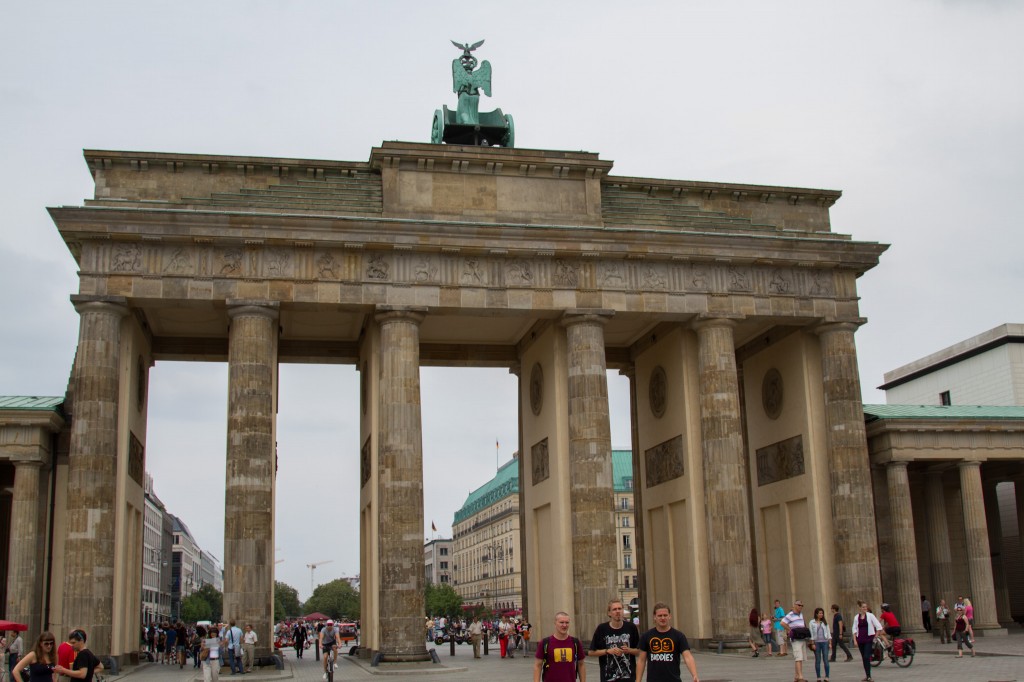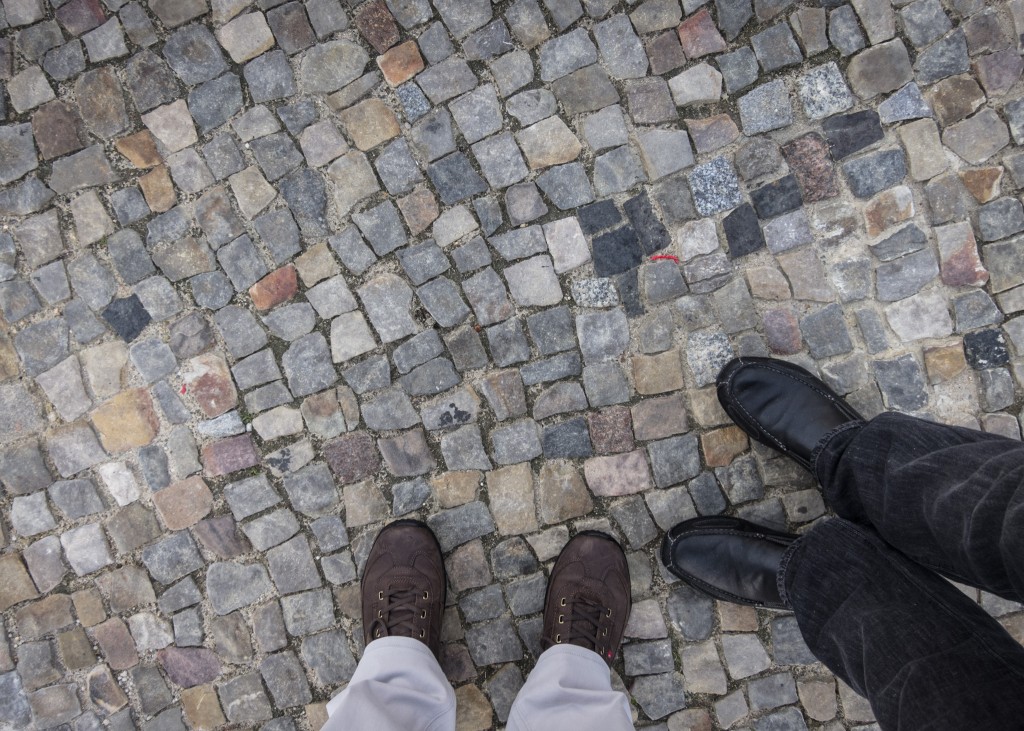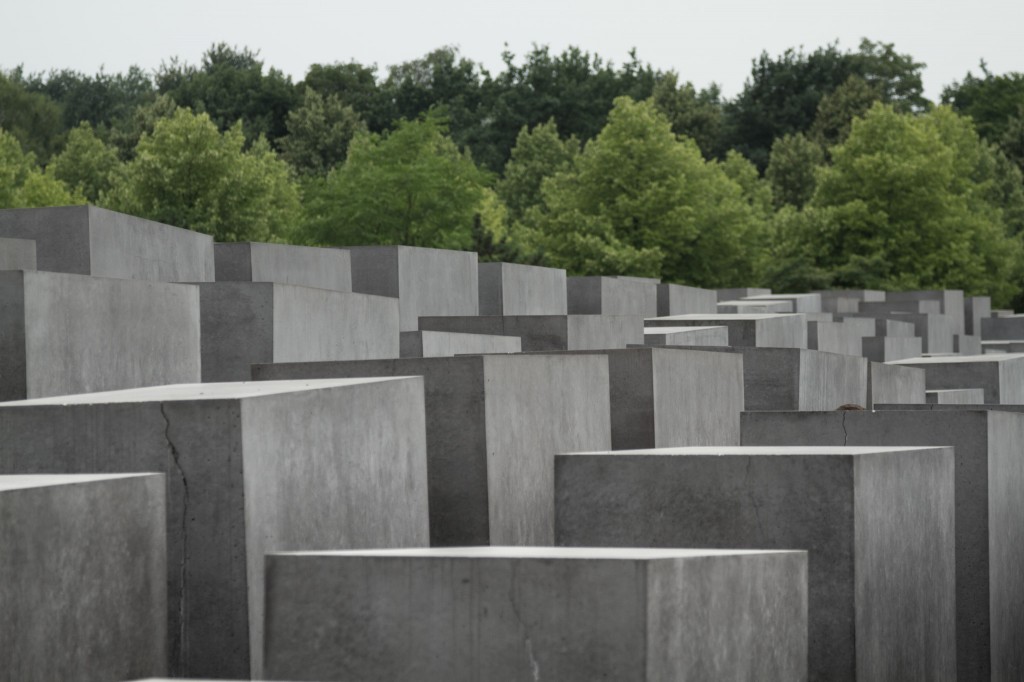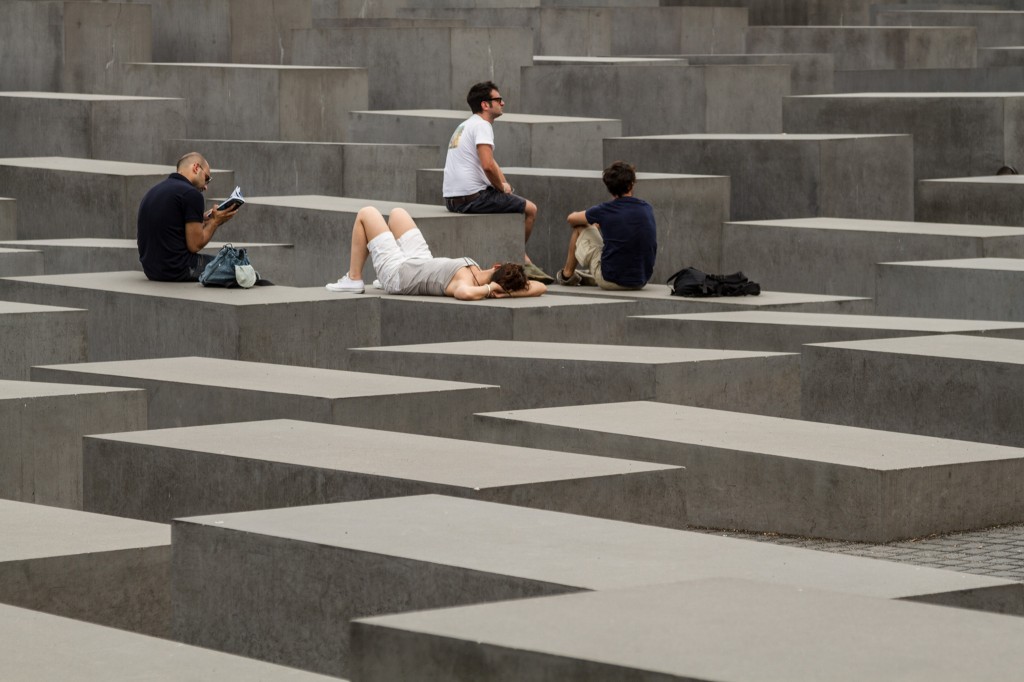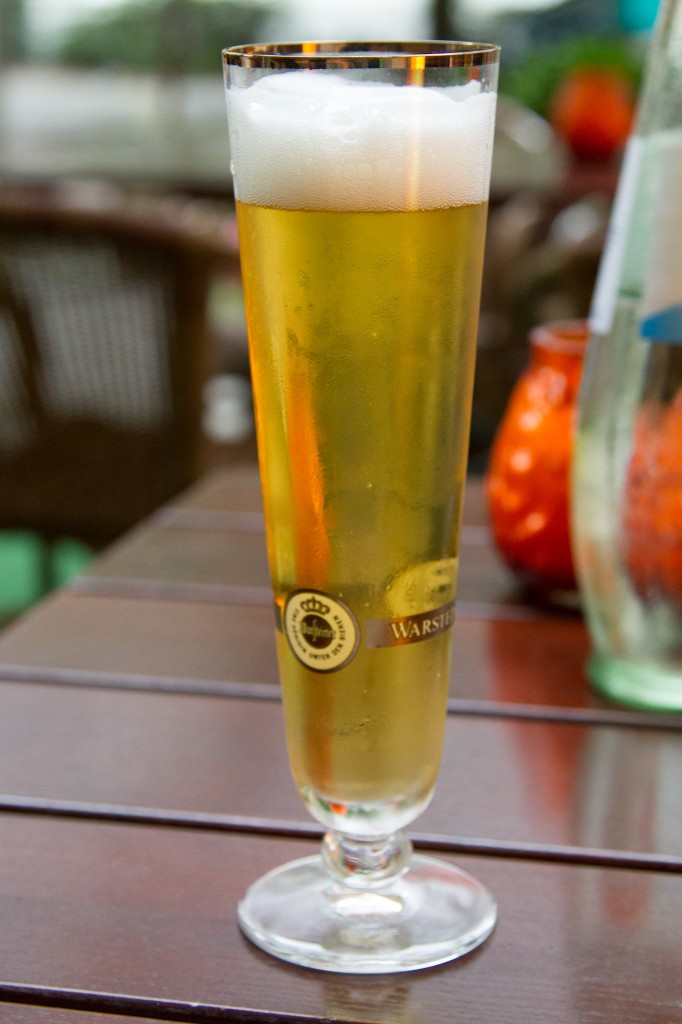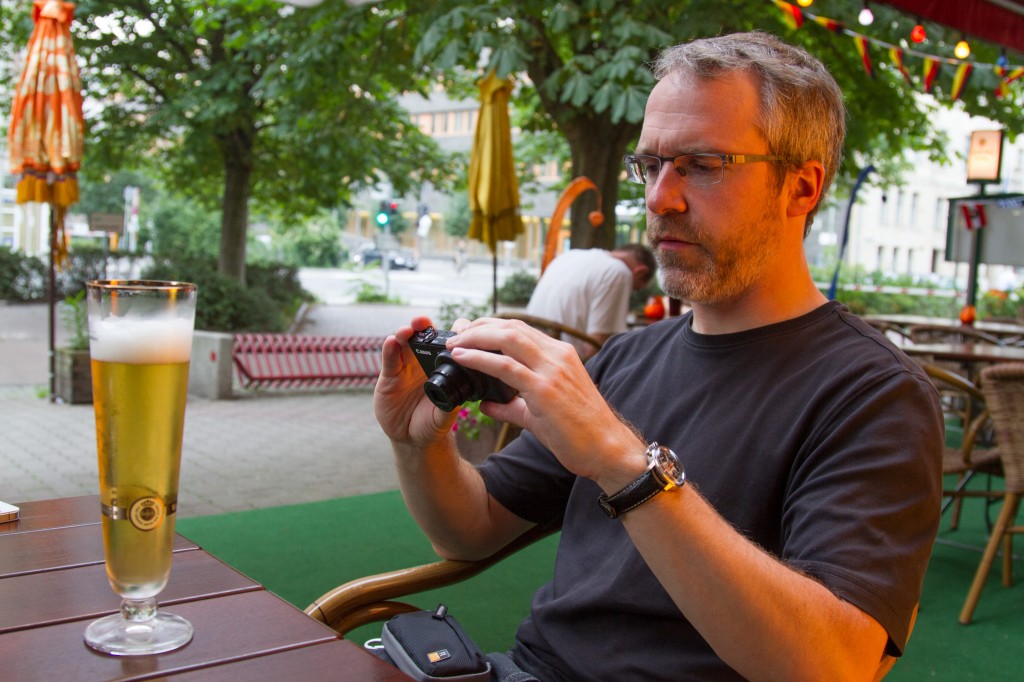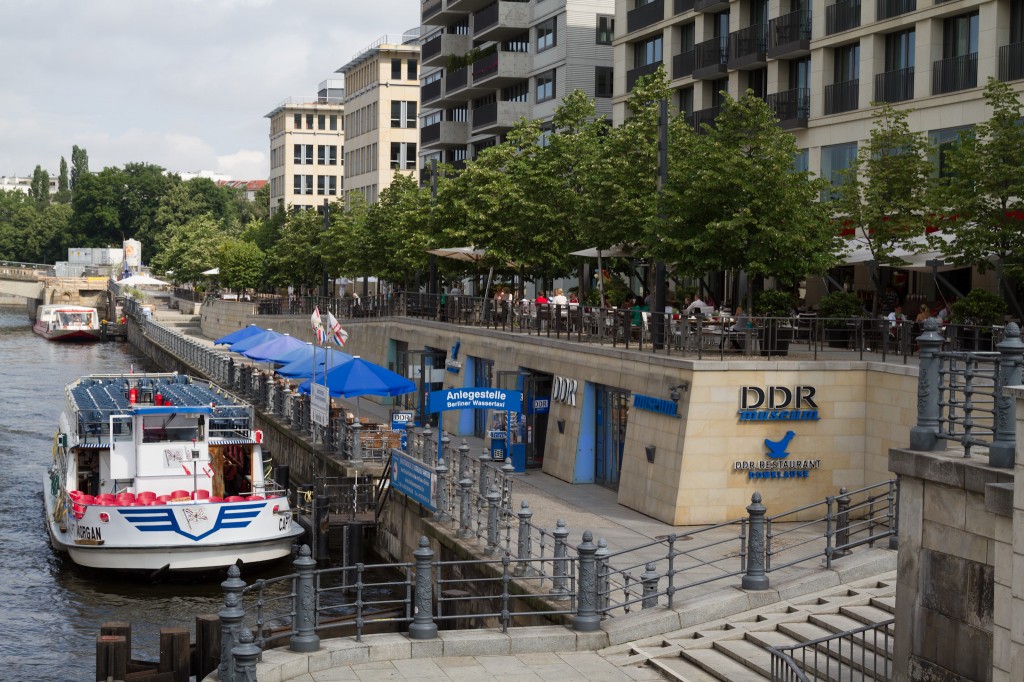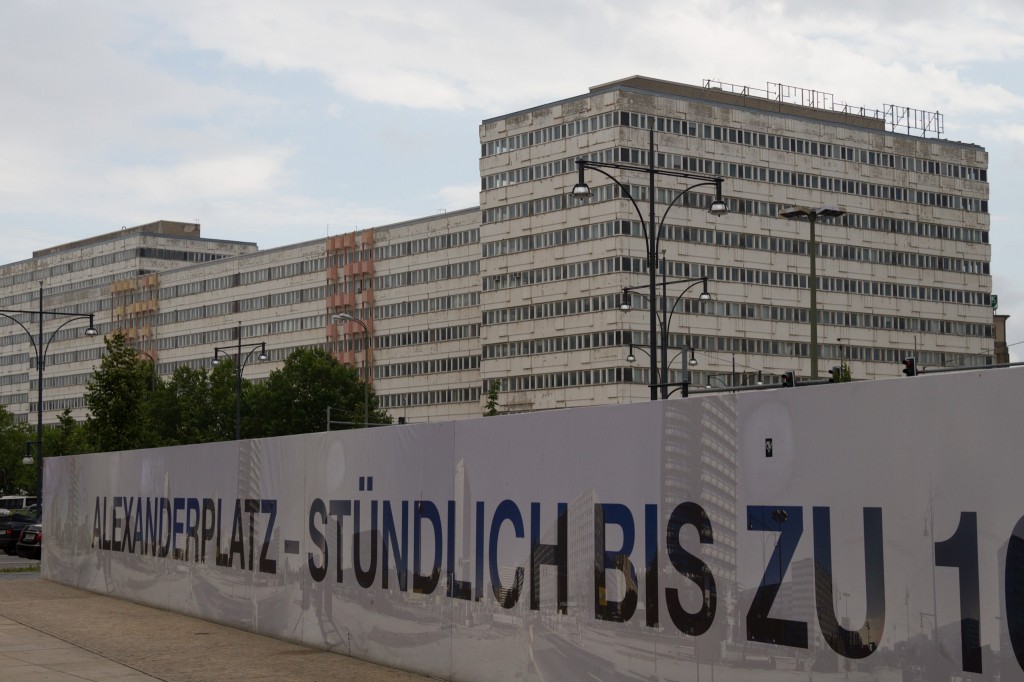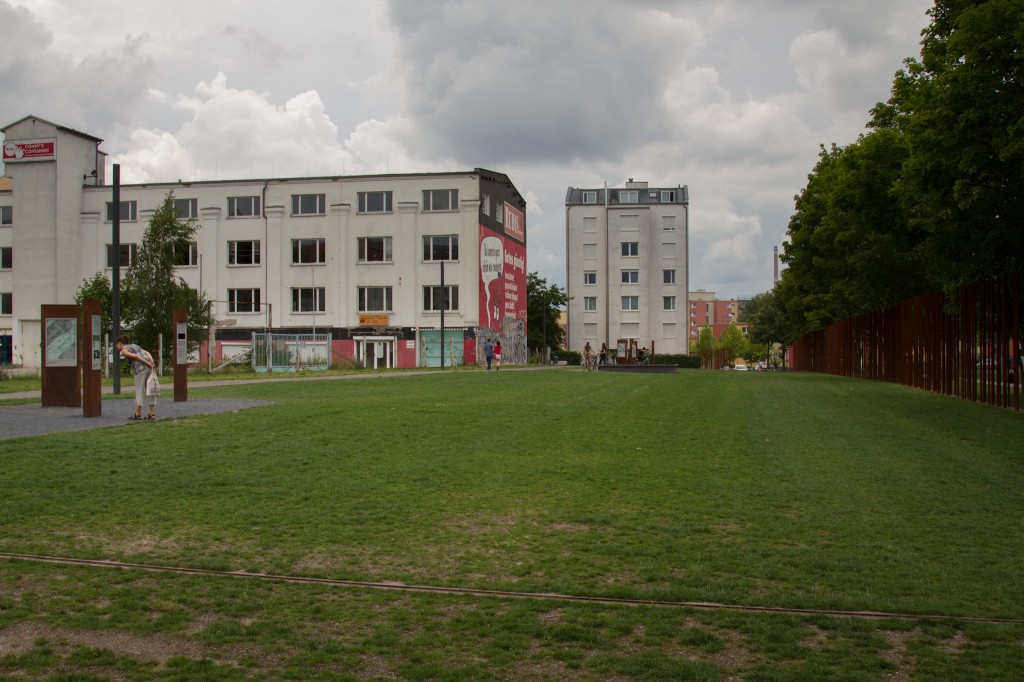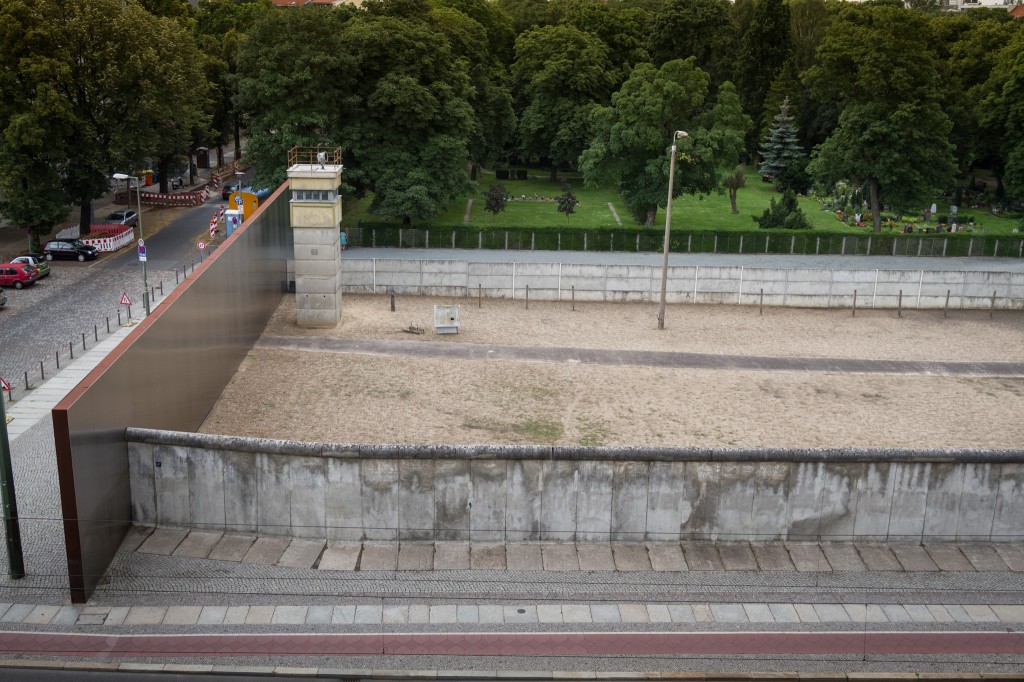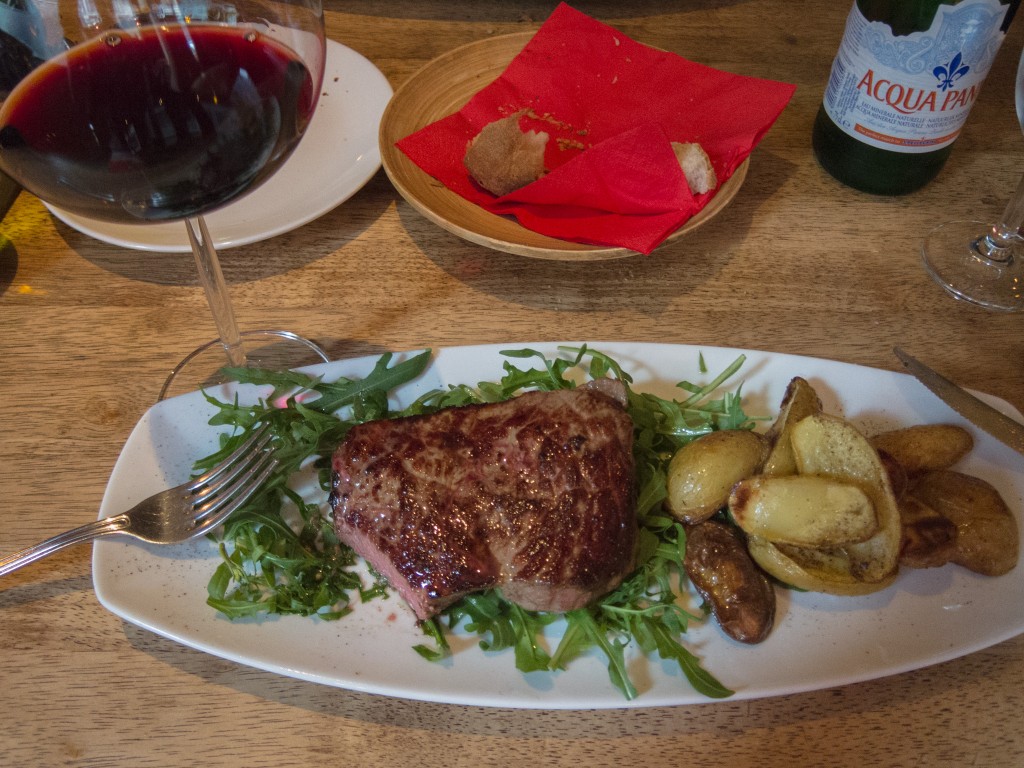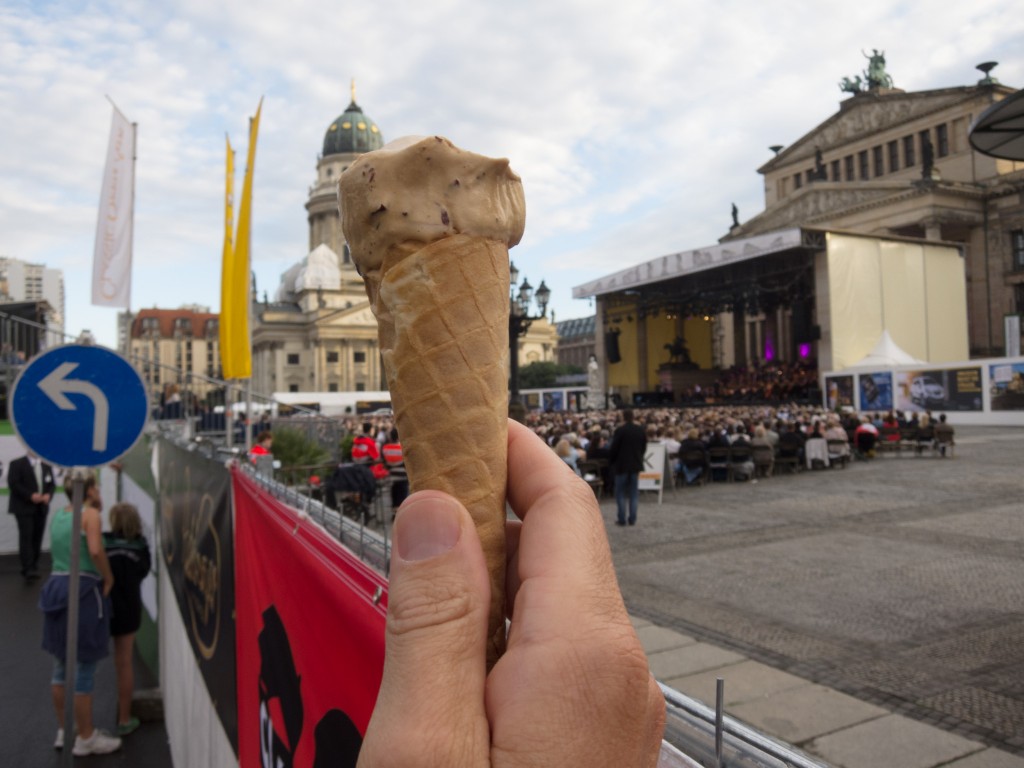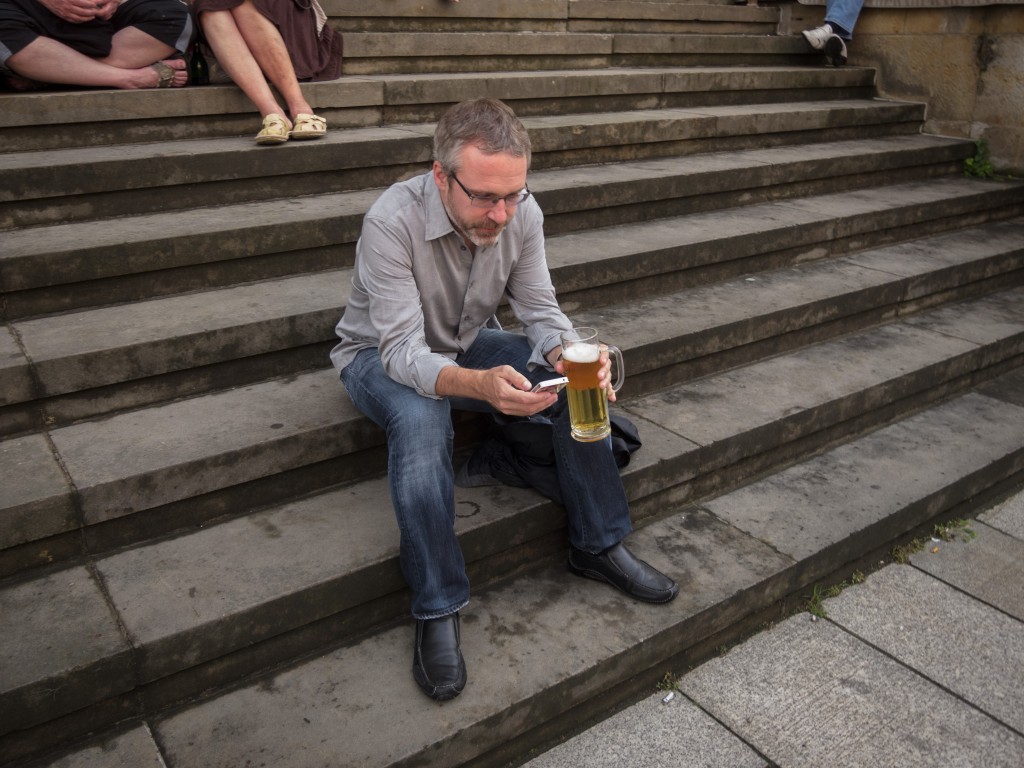We might have tried to do a bit much our second day in Berlin. To recover from a day of sitting in planes we each started the day working out – I did a circuit in the hotel’s gym and Jason ran about six miles through Tiergarten. With renewed energy we headed out with a few recommended sites in mind and ended up walking 14 miles though the city. By the end of the day we were thrashed.
We started out walking west through Brandenburg Gate again, and then the length of Tiergarten (Berlin’s Central Park) to the shopping district of Kurfürstendamm. We were hoping to see some great examples of German design, but instead saw all the expensive international brands that seem to cluster in every city. Our ultimate destination was the 6th floor of KaDeWe. KaDeWe is a gigantic department store started in 1907, and the 6th floor is 10,000 square meters (about 2½ acres) dedicated to fine foods. It took us over half an hour just to walk the perimeter of meats, vegetables, fish and desserts before venturing into the center section of breads, coffee, chocolate, canned goods and a whole section for salt.

A few samples from KaDeWe’s 6th floor.
Famished and tired, we dined on currywurst, pretzels and beer at one of the stands in the meat section.
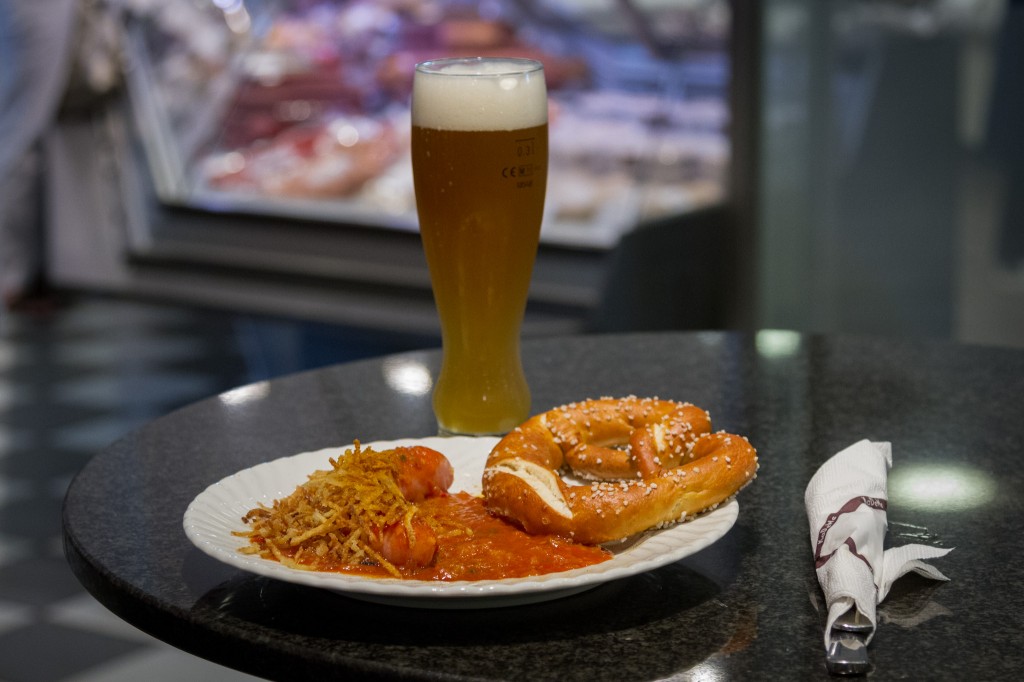
Lunch at KaDeWe.
Having learned that the scale of the map we had was a bit larger than it seemed, we decided to take the underground to our next destination rather than walking across the city again. It took us an embarrassingly long time and multiple tries to buy tickets, even with instructions in English.
We rose from the underground at Potsdammer Platz, heading for Checkpoint Charley. Along the way we came to the Museum fur Kommunikation which had been recommended by a friend, so we ducked in. It was a quiet day at the museum, we almost had it to ourselves. Germany has a fascinating history around communications technology, but the highlights here included an “exploded” stagecoach with all the parts hanging separately from the ceiling and a hanging frame in an exhibition about the Reconstruction of Bethlehem Church across the street. I know: “Not very techy of us,” but fun nonetheless.
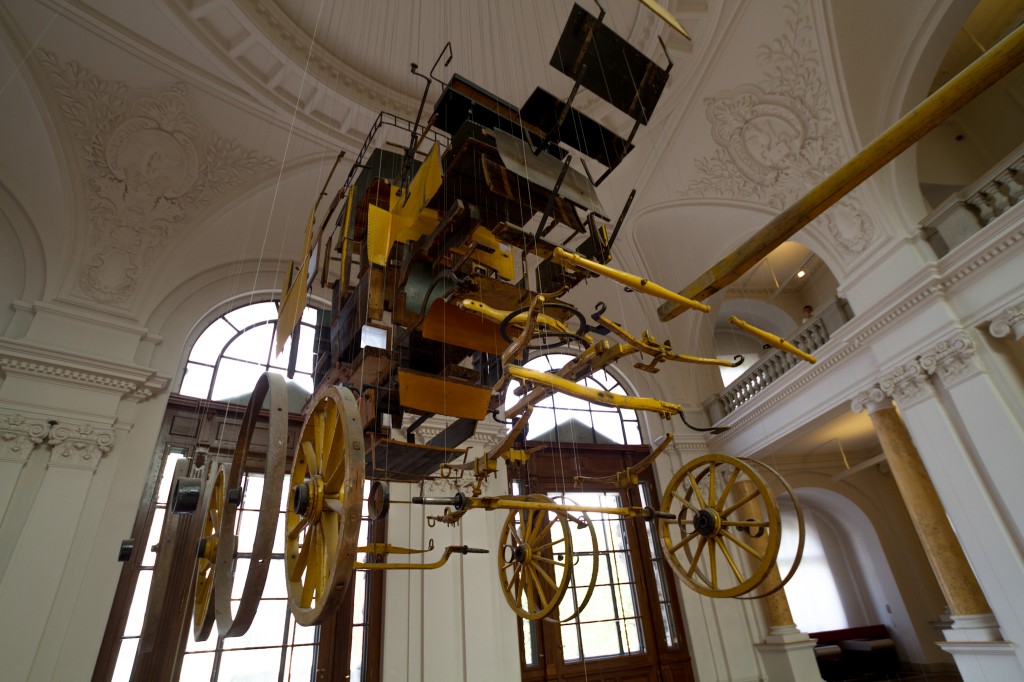
Exploded stagecoach at Museum fur Kommunikation

Carl, with exhibit frame

Jason takes it to a whole other level
Checkpoint Charley was our next stop. We had heard great things about the museum there, but couldn’t get enthused to go inside – the area is packed with tourists paying 6€ to have their picture taken with American soldier actors across from a McDonalds. There was an interesting open air display across the street that did an excellent job explaining the significance of the site along with interesting stories of escape attempts.

Checkpoint Charley, now kind of like Hollywood and Vine.
Part of my vacation algorithm is to go to the top of things, which is a challenge in a city as flat as Berlin – until we spotted the balloon ride just down the block. Air Service Berlin operates a helium balloon that lifts a circular walkway to 150m over the city.
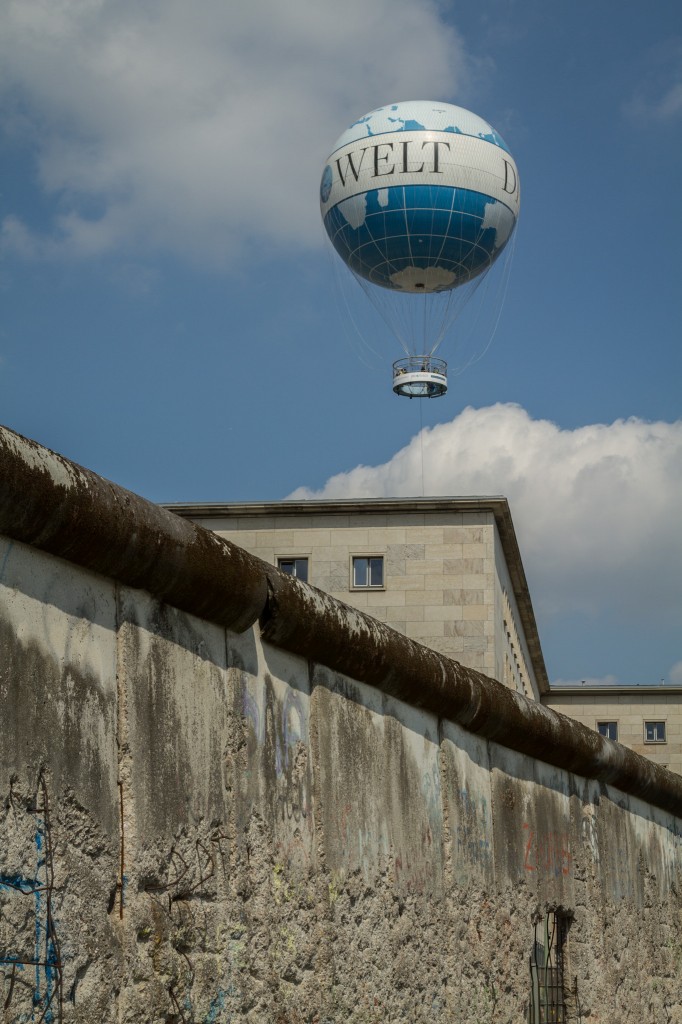
Balloon over Berin

Jason was hopeful the message on the balloon was not prophetic of the flight.

Nice view, with a mesh to keep you from jumping out.
Following the flight we walked across the street to the “Topographie des Terrors” where we visited the outdoor exhibition about Berlin from 1933 – 1945 and the rise and effect of the National Socialist Party. I never enjoyed history classes in school, mostly because I was pretty geeky, but partially because they seemed very dry. On of my reasons for wanting to visit Berlin was to learn in a tangible way about how someone like Hitler could rise to power and commit such atrocities with the support of what I assume were initially rational, feeling human beings. Exhibits like the Topography of Terrors, built on the site of the leadership of the SS, are perfect ways to learn this.

Topography of Terrors, view from above.
The exhibit was very helpful. We learned a lot about the linear history of the Party, but I was still left wondering why the Parliament effectively forfeited their power in 1933. Wikipedia has helped (“Enabling Act of 1933“) but I still have a lot to learn. I’m very embarrassed about my lack of knowledge – history class showed me the sequence of events, but what I really want to understand is the “why,” not the “when” and “where.” I feel that I’m getting closer to being able to ask the right questions for what I want to learn.
By this time we were physically beat and emotionally wounded. We managed to walk back to the hotel for some R&R.
Around 5:30 we regrouped for dinner. A friend had recommended a street food place called Mustafa’s. It was too far to walk, but with our newfound underground confidence we headed out. Despite a station closure which completely screwed up the trains, we managed to find our way to the best Donor Kabaps in Berlin. Seriously, if you ever get to Berlin you have to eat there. The line was long but only took about 15 minutes for us to work through. The guys inside spoke English well so we could customize our orders a bit (not surprising given that they are surrounded by hostels that seem to account for a lot of their business). Mustafa’s only has soda and water to drink, so the convenience store they are in front of does a booming business supplying beer to most of the diners.

The line at Mustafa’s
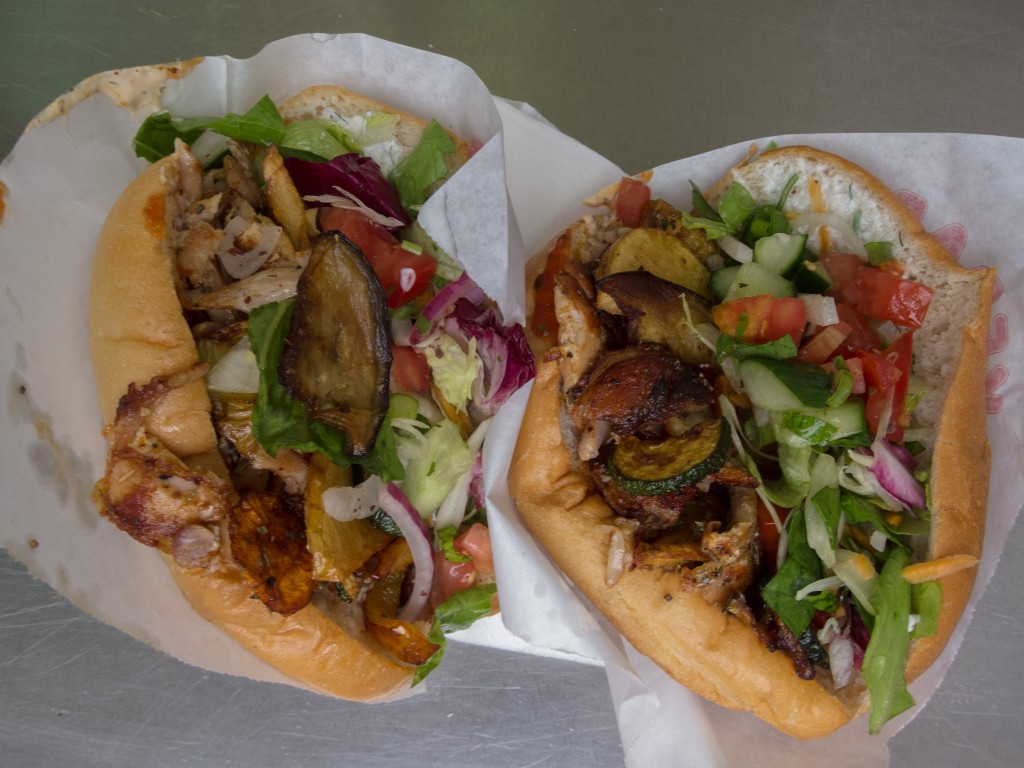
The. Best. Kabaps.
After dinner we rode back to Brandenburg Gate, walked down to Potsdamm Platz to see the glitz at night, had a drink and headed back to the hotel to crash.

Wait, that’s not beer!
These images, plus more:
-

-
A few samples from KaDeWe’s 6th floor.
-

-
America!
-

-
Lunch at KaDeWe.
-

-
Exploded stagecoach at Museum fur Kommunikation
-

-
Carl, with exhibit frame
-

-
Jason takes it to a whole other level
-

-
Checkpoint Charley
-

-
Checkpoint Charley, now kind of like Hollywood and Vine.
-

-
Jason was hopeful the message on the balloon was not prophetic of his flight.
-

-
Nice view, with a mesh to keep you from jumping out.
-

-
Topography of Terrors, view from above.
-

-
The view east from the balloon, Checkpoint Charley is the closest intersection.
-

-
Holocaust Memorial from the balloon.
-

-
The view straight down from the balloon.
-

-
Balloon over Berin
-

-
The line at Mustafa’s
-

-
The. Best. Kabaps.
-

-
The pillars of the Brandenburg Gate are riddled with bullet holes.
-

-
The Reichstag (Parliament building) near sunset.
-

-
Sections of the Wall at Potsdamm Platz.
-

-
Wait, that’s not beer!
-

-
Holocaust Memorial at night on our way back to the hotel.













